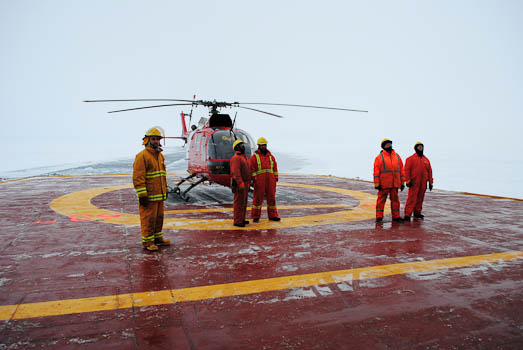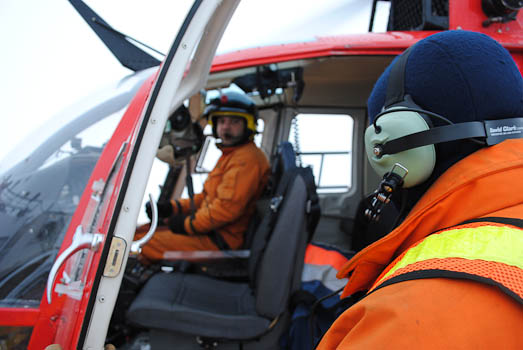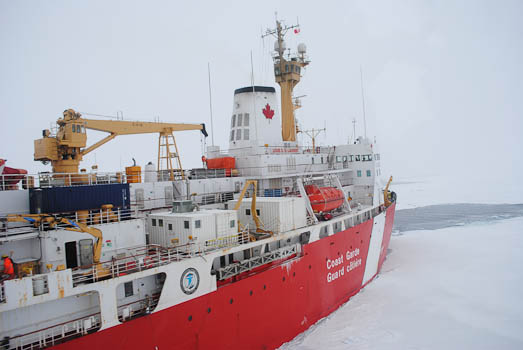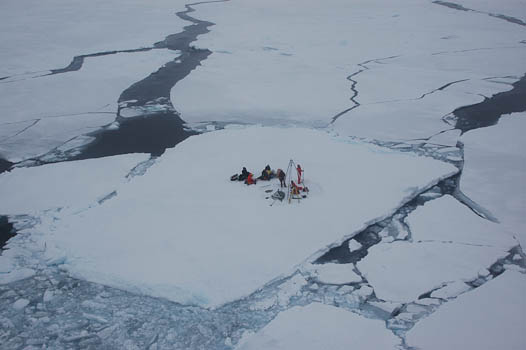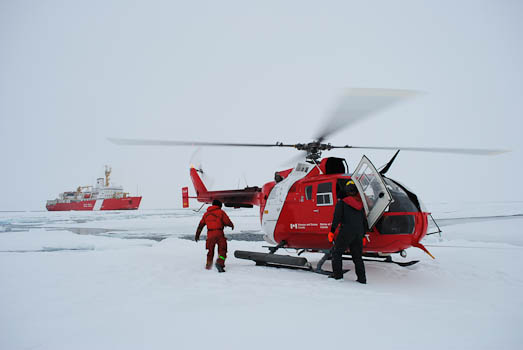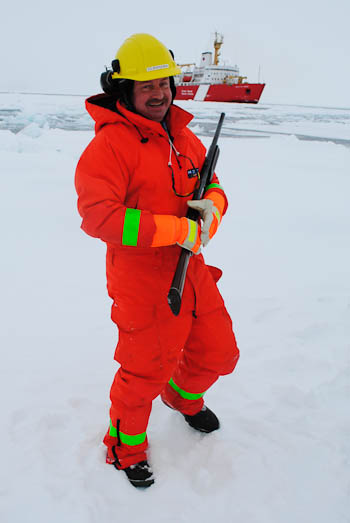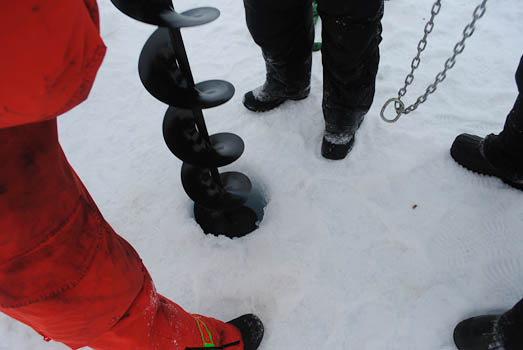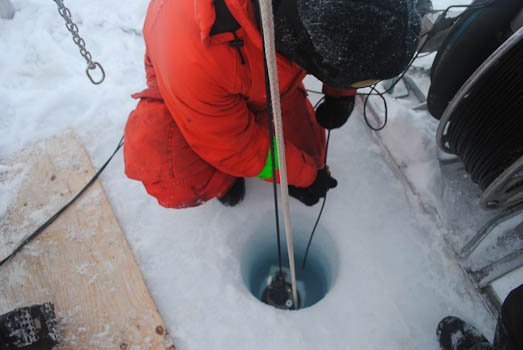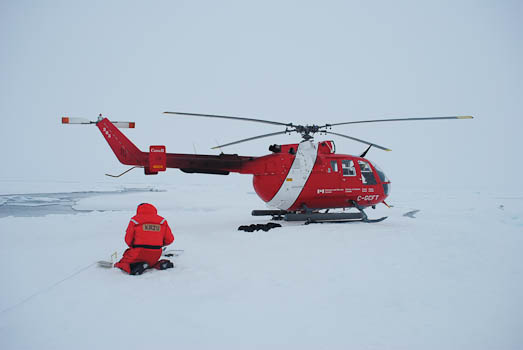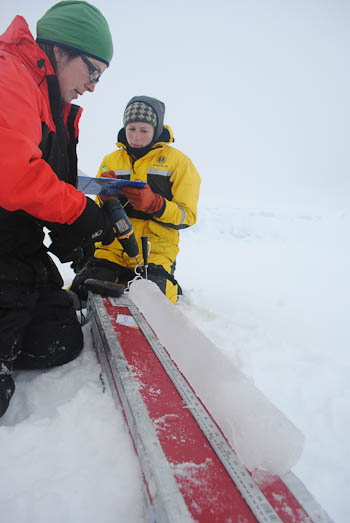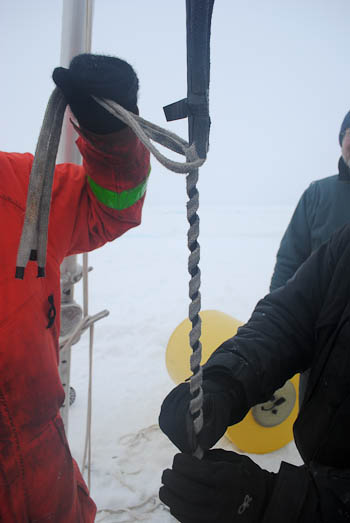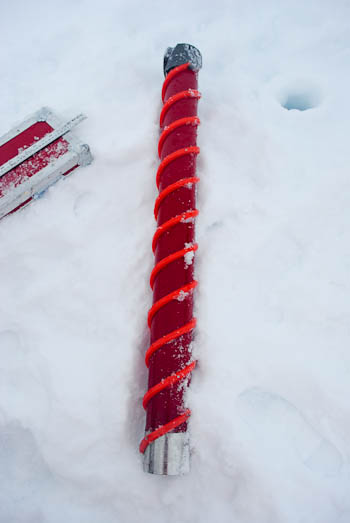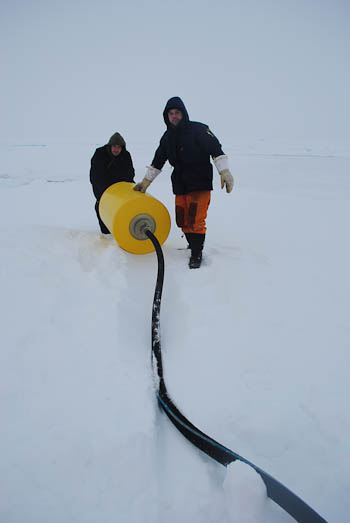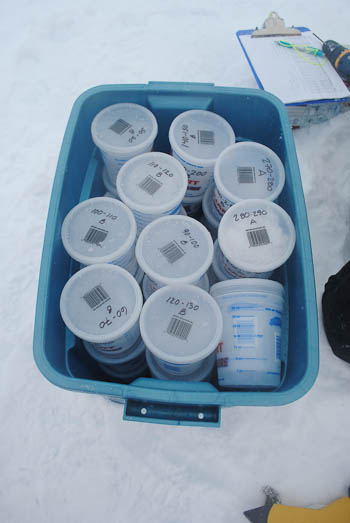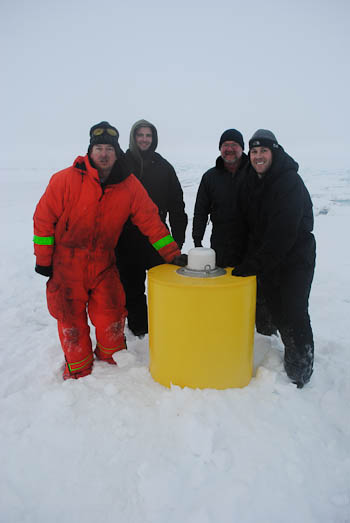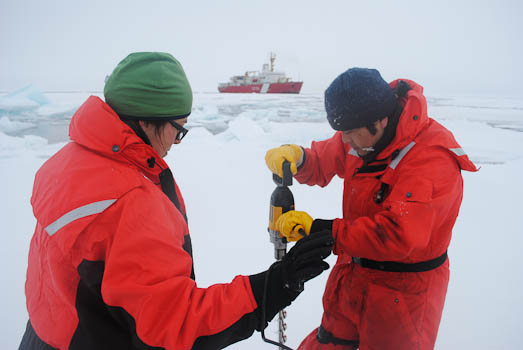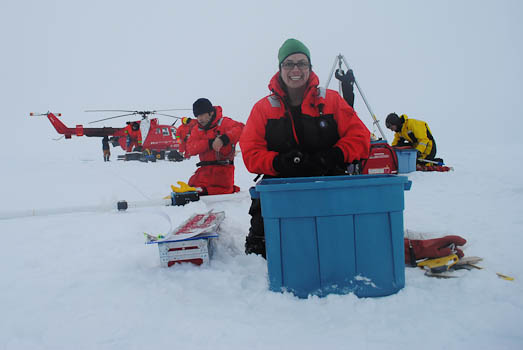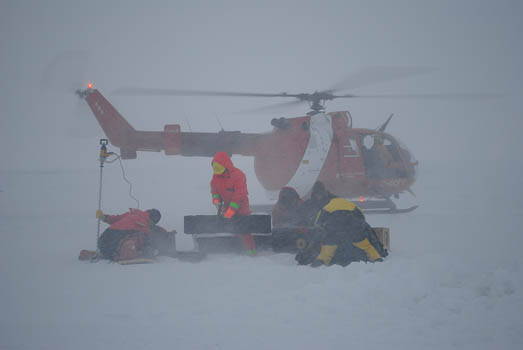Alex KainOctober 6, 2009Up North, even the most thorough plans can dissolve in the face of the Arctic's true arbiter: the weather. Stormy weather can toss the ship around the sea and prevent bongo net deployments. Howling winds can make rosette casts impossible. Or, like today, snow and fog can complicate extensive plans to set up an Ice-Based Observatory (IBO) on a floe of multi-year ice. IBOs consist of a group of buoys that monitor the conditions of the ice, ocean water, and atmosphere in order to further scientists' understanding of changing environmental conditions. Currently, scientific groups from around the world are collaborating to establish the Arctic Observing Network, which will consist of a drifting array of IBOs throughout the Arctic Ocean. Today's thick fog cover prevented WHOI's Rick Krishfield and helicopter pilot Jim Myra from identifying a floe both large and thick enough to support the weight of the helicopter, gear, and teams setting up each of the three IBO buoys. Pack ice can be deceptive in appearance. Snow cover can obscure melt ponds and other surface imperfections that detract from the ice's strength. Additionally, the edges of the floe are thinner than its bulk. They contain fault lines that can break under pressure from gear or people. In choosing a site for a mooring deployment, the helicopter is used to observe the ice from a high elevation. The aerial perspective allows for assessing the viability of various floes based on their size, but also estimating their age and thickness by looking at shape, ridging, and color. Generally, a crystalline blue hue indicates that a floe has lasted longer than one melt season and is safe to land on. Foggy conditions obscure views of the ice and estimations of strength. Today, Krishfield and Myra found a floe four meters thick, but that was only the size of a hockey rink. The two decided that it was big enough to support only the installment of an Ice-Tethered Profiler (ITP) and to allow for scientists to take ice core samples. The IBO, they decided, will be deployed tomorrow when weather conditions are predicted to improve and larger floes can be found. The small team that flew out found a pristine environment and thick ice ideal for an ITP installment.
All text and photos property of Alex Kain unless otherwise indicated. Last updated: October 7, 2019 | |||||||||||||||||||||||||||||||||||||||||||||||||||||||||||||||||
Copyright ©2007 Woods Hole Oceanographic Institution, All Rights Reserved, Privacy Policy. | |||||||||||||||||||||||||||||||||||||||||||||||||||||||||||||||||


